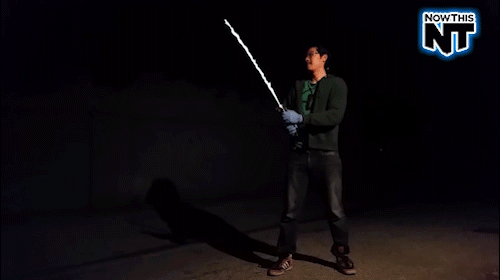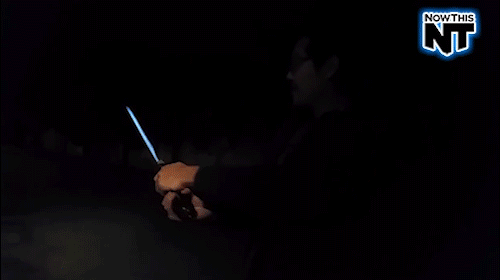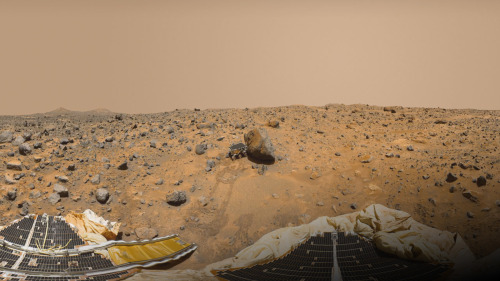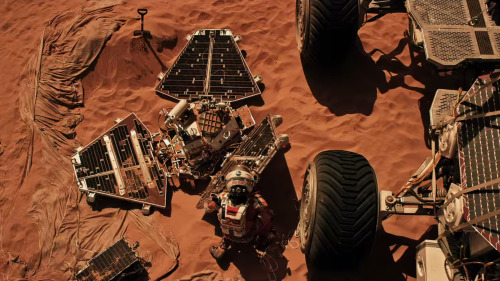This Is The Spaceship That Could Bring Humans To Mars

This is the spaceship that could bring humans to Mars
Follow @the-future-now
More Posts from Curiositytherover and Others


Google’s Superhuman Computer Can Tell Where Neany Any Photo Was Taken
Google knows where your photos were taken… http://futurism.com/world-googles-superhuman-computer-knows-photo-taken/
Where did the stars go?
One day, you find time to get out of the clutches of your work life and you decide to gaze at the stars.
Something which you used to do when you were a kid.
But the city life with all its glory has diverted you to other ‘fun’ things.

But to your amazement you find that the density of stars has drastically decreased.
‘That’s preposterous’- you say to yourself. That can’t be true.
You are positive that it has something to do with you aging.

You decide to go to your eye doctor and do a thorough check up. The doctor concludes that your eye sight is perfect.

You are delighted, knowing that your eye sight is perfect and that you are going to see those stars again. You spend all day lamenting about it.
You crave for the starry night sky. And you are sure it would look like so :

So, the following night you go to the terrace to rejoice at the sight. But yet see that the sky is not starry at all as you had marveled.
In fact, there is a stark difference between what you had in mind and what you observe.

You get increasingly concerned about it. You ask a few people around and you find out that the answer to this mysterious phenomenon is Light Pollution..
And you start to explore this new bizarre form of pollution.
What is Light Pollution?
Alteration of natural light levels in the outdoor environment owing to artificial light sources.
What does it do?
The impact of light pollution is to reduce our eye’s limiting magnitude. That means that we can see fewer and fewer stars.

The differences in the number of stars that can be seen due to varying levels of background light pollution.
Light pollution competes with starlight in the night sky for urban residents, interferes with astronomical observatories, and, like any other form of pollution, disrupts ecosystems and has adverse health effects.
Light pollution is a side effect of industrial civilization. Its sources include building exterior and interior lighting, advertising, commercial properties, offices, factories, streetlights, and illuminated sporting venues.
How can I prevent it?
(Light Pollution and How to Reduce It)
The solution does not involve curtailing nightlife, hampering the nighttime economy or compromising safety. It just requires directing lights where they’re needed and eliminating waste.
Here what you can do prevent light pollution.
1) Only turn on outdoor lights when needed—or install motion sensors.

2) Point the lights downward and outfit them with “shields” to prevent light from traveling sideways. The goal is to shine them only where illumination is wanted—not in people’s eyes or on other people’s property (a case of “light trespass”).

3) Lower the wattage of your bulbs and put them on dimmers. Bright lights and dark shadows don’t improve safety, but reduce it.

4) Close curtains at night to keep indoor light in. If you live in a multi-story building, use black-out curtains to prevent bird crashes.

And, of course, please use energy-efficient lights to cut global warming emissions even more than you’ll be doing already.
Inspiration :
Here’s what the night sky looks now, with light pollution.

And here’s how it will look like without it.

This post is to educate all the followers of the blog about Light Pollution, and raise awareness about it.
“Stars can’t shine without Darkness”
and hence i urge you to do your part to curbing Light Pollution.
Have a good day :)
PC: NASA, classroomclipart, Umut Siliman, eschooltoday,medscape

Vibrant winter stars over Lake Tahoe, a week ago. That’s Sirius’s bright reflection on the water! [3000x1633]
Source: http://i.imgur.com/ZnhiC8R.jpg

We normally post our tech news roundups on Fridays, but due to turkey, football, and lots of napping, we’re publishing it today instead. Enjoy!
1. The right drones for everyone this holiday season Love is in the air, and here’s a list of UAVs you can use to catch it. There’s never been a better reason to sit around while your relatives drone on and on. Really. With gifts like these the holidays will fly right by. via: Quartz
2. New tech can wirelessly charge your electronics with a standard Wi-Fi router There’s a good reason your Wi-Fi router is always shooting dirty looks at your laptop’s power cord. But rather than stoop to their level, routers everywhere are taking up the slack. Try to be sympathetic when your power cord finally winds up jobless. It’s bound to come as a shock. via: BGR 3. The Pickle Index is a Delightfully Weird, App-Driven Novel Like No Other Immersive multimedia experiences are becoming more and more advanced every day, but there are plenty of people who still use monomedia to get their virtual realities. With The Pickle Index, techies and bookworms will finally have something to talk about if they’re both forced to interact with other humans. via: WIRED
4. Circuit Board Tattoos That Actually Work Will Make Your Cyborg Fantasies Come True Do yourself a favor and only get tattoos in languages that you understand. Otherwise you might end up with a bunch of spurious output, and it’s going to take forever to find that missing comma. via: Gizmodo





REAL LIFE LIGHTSABER ALERT!
The guy that made the real life version of Mjolnir has crafted another real version of a fictional weapon: a functioning lightsaber. Allen Pan made the fabled Jedi weapon out of an igniter, butane, methanol and acetone which creates a focused pillar of flame. It even makes real sounds! Now, of course this isn’t a conventional lightsaber and you shouldn’t try this at home but it’s awesome that somebody finally accomplished something close! GIVE THIS MAN A GRANT.
Jeff Williams: Record Breaker
Astronaut becomes U.S. record holder for most cumulative time in space!
The Olympics are over, but Americans are STILL breaking records. NASA astronaut Jeff Williams just broke Scott Kelly’s record of 520 cumulative days spent in space. When Williams returns to Earth on Sept. 5, he will have racked up 534 days in space. To celebrate this amazing achievement, here are some of the best images taken during his four spaceflights.

STS-101 Atlantis:
During May 2000, Williams made his first spacewalk during space shuttle Atlantis’ STS-101 mission. On this 10-day mission, Williams’ first spacewalk lasted nearly seven hours. He is pictured here outside the space station.

Expedition 13:
Williams experienced his first long-duration mission in 2006, when he served as flight engineer for Expedition 13 space station mission. During his time in orbit, he performed two spacewalks, saw the arrival of two space shuttle missions and resumed construction of the orbiting laboratory during his six-month tour. While on one of those spacewalks, Williams took this selfie.

Expedition 21/22:
Williams returned to space for another six-month mission in 2009 as a flight engineer on Expedition 21 and commander of Expedition 22. During that time, he hosted the crews of two space shuttle missions. The U.S.-built Tranquility module and cupola were installed on station. Here is an image of the then newly installed cupola.

Expedition 47/48:
This time around, Williams has been onboard the space station since March 2016, where he served as flight engineer for Expedition 47 and now commands Expedition 48. With over 7,000 retweets on Williams’ photo of an aurora from space, his Twitter followers were clearly impressed with his photography skills.
Make sure to follow us on Tumblr for your regular dose of space: http://nasa.tumblr.com


Mars Pathfinder & Sojourner Rover (360 View) Explained
Thanks to new technology, we can take a 360-degree tour of the 1997 Pathfinder mission landing site, including Sojourner, the first Mars rover. Check out this interactive YouTube panorama, and then…
…keep scrolling to find out more about each point of interest, how the Pathfinder mission compares to “The Martian” and NASA’s real Journey to Mars.

Yogi
“Yogi” is a meter-size rock about 5 meters northwest of the Mars Pathfinder lander and the second rock visited by the Sojourner Rover’s alpha proton X-ray spectrometer (APXS) instrument. This mosaic shows super resolution techniques applied to help to address questions about the texture of this rock and what it might tell us about how it came to be.

Twin Peaks
The Twin Peaks are modest-size hills to the southwest of the Mars Pathfinder landing site. They were discovered on the first panoramas taken by the IMP camera on the July 4, 1997, and subsequently identified in Viking Orbiter images taken over 20 years ago. They’re about 30-35 meters tall.

Barnacle Bill
“Barnacle Bill” is a small rock immediately west-northwest of the Mars Pathfinder lander and was the first rock visited by the Sojourner Rover’s alpha proton X-ray spectrometer (APXS) instrument. If you have some old-school red-cyan glasses, put them on and see this pic in eye-popping 3-D.

Rock Garden
The Rock Garden is a cluster of large, angular rocks tilted in a downstream direction from ancient floods on Mars. The rocky surface is comprised of materials washed down from the highlands and deposited in this ancient outflow channel.

MOAR INFO
Pathfinder Lander & Sojourner Rover
Mission Facts [PDF]
Science Results
Rock & Soil Types


This vista was stitched together from many images taken in 1997 by Pathfinder.

Pathfinder and Sojourner figure into Mark Watney’s quest for survival on the Red Planet in the book and movie, “The Martian.” See JPL’s role in making “The Martian” a reality: http://go.nasa.gov/1McRrXw and discover nine real NASA technologies depicted in “The Martian”: http://go.nasa.gov/1QiyUiC.

So what about the real-life “Journey to Mars”? NASA is developing the capabilities needed to send humans to Mars in the 2030s. Discover more at http://nasa.gov/journeytomars and don’t forget to visit me when you make it to the Red Planet. Until then, stay curious and I’ll see you online.
Getting real - on Mars
Boston MA (SPX) Jan 28, 2016 NASA wants you to know that it’s only a matter of months before you can wake up in a Martian habitat, grab some breakfast, jump into your spacesuit, and head out for a stroll across the Red Planet’s surface. Granted, the experience will be virtual, but it promises be the most realistic vision of human Mars habitation that a team comprising NASA engineers, a digital media developer, and MIT Depar Full article
-
 pipuisci reblogged this · 6 years ago
pipuisci reblogged this · 6 years ago -
 instantlycybertyrant liked this · 9 years ago
instantlycybertyrant liked this · 9 years ago -
 strawberry-cough liked this · 9 years ago
strawberry-cough liked this · 9 years ago -
 wandermarbles reblogged this · 9 years ago
wandermarbles reblogged this · 9 years ago -
 everything-automatic reblogged this · 9 years ago
everything-automatic reblogged this · 9 years ago -
 manaisstoredintheballs liked this · 9 years ago
manaisstoredintheballs liked this · 9 years ago -
 directingzombies reblogged this · 9 years ago
directingzombies reblogged this · 9 years ago -
 xxstupidtacoxx reblogged this · 9 years ago
xxstupidtacoxx reblogged this · 9 years ago -
 xxstupidtacoxx liked this · 9 years ago
xxstupidtacoxx liked this · 9 years ago -
 convolutionary reblogged this · 9 years ago
convolutionary reblogged this · 9 years ago -
 mylesdeep liked this · 9 years ago
mylesdeep liked this · 9 years ago -
 diet-coke-in-blue liked this · 9 years ago
diet-coke-in-blue liked this · 9 years ago -
 doughnutcrow reblogged this · 9 years ago
doughnutcrow reblogged this · 9 years ago -
 jessalyn-lauree reblogged this · 9 years ago
jessalyn-lauree reblogged this · 9 years ago -
 where-is-thy-lameo reblogged this · 9 years ago
where-is-thy-lameo reblogged this · 9 years ago -
 davedata-blog reblogged this · 9 years ago
davedata-blog reblogged this · 9 years ago -
 davedata-blog liked this · 9 years ago
davedata-blog liked this · 9 years ago -
 avalon-faerie reblogged this · 9 years ago
avalon-faerie reblogged this · 9 years ago -
 weedcookie liked this · 9 years ago
weedcookie liked this · 9 years ago -
 gedulisz liked this · 9 years ago
gedulisz liked this · 9 years ago -
 captain-starskull reblogged this · 9 years ago
captain-starskull reblogged this · 9 years ago -
 mrdescales liked this · 9 years ago
mrdescales liked this · 9 years ago -
 littleapocalypsegirl liked this · 9 years ago
littleapocalypsegirl liked this · 9 years ago -
 thegamejustgotmorefierce reblogged this · 9 years ago
thegamejustgotmorefierce reblogged this · 9 years ago -
 oshinytomato liked this · 9 years ago
oshinytomato liked this · 9 years ago -
 whatireallyamisabunburyist liked this · 9 years ago
whatireallyamisabunburyist liked this · 9 years ago -
 ahsokita-tano reblogged this · 9 years ago
ahsokita-tano reblogged this · 9 years ago -
 dualityofflan-blog liked this · 9 years ago
dualityofflan-blog liked this · 9 years ago -
 nagronshiper2002 liked this · 9 years ago
nagronshiper2002 liked this · 9 years ago -
 indycoveryourheart liked this · 9 years ago
indycoveryourheart liked this · 9 years ago -
 irrationalactors reblogged this · 9 years ago
irrationalactors reblogged this · 9 years ago -
 pejw liked this · 9 years ago
pejw liked this · 9 years ago -
 everydayisgray liked this · 9 years ago
everydayisgray liked this · 9 years ago -
 undead-spiderlily liked this · 9 years ago
undead-spiderlily liked this · 9 years ago -
 ariadreambox-blog reblogged this · 9 years ago
ariadreambox-blog reblogged this · 9 years ago -
 paltrav liked this · 9 years ago
paltrav liked this · 9 years ago -
 thesuspectnumberone reblogged this · 9 years ago
thesuspectnumberone reblogged this · 9 years ago
